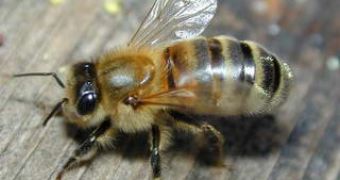A recent study related to hypertension indicates that a possible cure may be obtained from honeybee venom. Hypertension is among the most frequently-encountered diseases worldwide.
Based on the estimations made by The American Heart Association, genetic inheritance, as well as high-fat and salt-saturated diets cause 73 million Americans (one out of three) to suffer from hypertension. This makes them highly vulnerable to heart and kidney disease, stroke, atherosclerosis or eye damage, which can yield permanent organ damage and even death. As kidneys control the body's water balance, more salt leads to more water in kidneys and arteries, which causes an increase in the fluid mass that rises overall pressure (blood included). Even more, as salt's ions, sodium and potassium, are linked in cells, they travel in and out of them on certain ion channels. The ion charges cause an electrical charge which may affect the cells which control hormones or muscles, as well as neuronal impulses.
Researchers from Professor of Physiology, M.D., Ph.D. Zhe Lu’s laboratory from the School of Medicine at the University of Pennsylvania have been able to successfully trace a connection between tertiapin, a toxin that is part of the honeybee venom, and the fundamental potassium channels that are in charge of the kidneys' salt regulation process. The inward-rectifer potassium channels (Kir) allow for potassium to enter cells and create a voltage of some intensity across the cellular membrane. Tertiapin (TPN) blocks these ion channels, allowing for the elimination of salt directly in waste before its re-absorbency raises water levels and, thus, blood pressure.
The problem resides in the fact that there are seven kinds of Kir channels in the human body, mostly found in the heart, and it is easy to imagine what closing all of them would lead to. Luckily, after about ten years of studies and tests, the team from Lu's lab managed to successfully bioengineer a mutant variant which they called TPNLQ. This selectively blocks the Kir channels located in the kidneys which are responsible for the salt balance regulation process. This discovery forms the basis of a possible new hypertension treatment. As Zhe Lu says, “The clue comes from patients with genetic defects in these channels who lose a lot of sodium because it cannot be effectively reabsorbed and thus have low blood pressure. An inhibitor specifically against these kidney channels will allow this idea to be tested”.
TPNLQ will serve as a study tool for animal hypertension and blood pressure and may yet prove to be a key factor in future cures for chronic hypertension patients.

 14 DAY TRIAL //
14 DAY TRIAL //